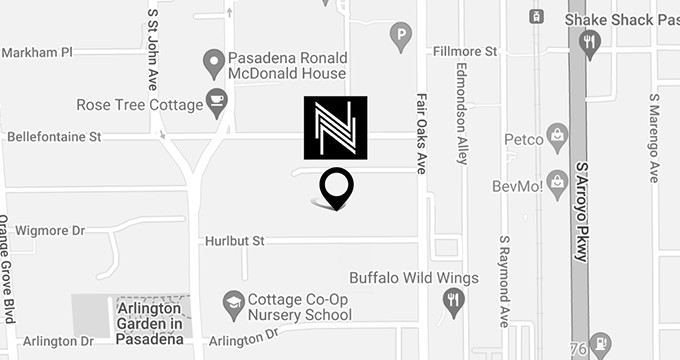
When considering a facelift, age is often seen as the defining factor—but the reality is far more complex. True facial aging varies widely among individuals due to genetics, lifestyle, and skin biology. Understanding the subtle interplay between these factors and chronological age is key to choosing the right time for surgery. This perspective moves beyond the typical age brackets to focus on personalized facial health and natural timing.
Understanding Facial Aging: It’s Not Just About Wrinkles
Facial aging is a multi-dimensional process that extends far beyond the appearance of wrinkles. While lines and creases are the most visible signs, the underlying changes involve loss of facial volume, shifts in bone structure, and the weakening of skin’s natural elasticity. Fat pads that once gave youthful contours gradually diminish or shift downward, causing sagging in areas like the cheeks and jawline. Bone density also decreases subtly over time, altering the overall facial framework. These changes affect how a facelift should be approached—not just to smooth skin but to restore a balanced, natural shape. Recognizing these layers of aging helps determine the optimal timing for surgery, as well as the technique that will best preserve individuality while enhancing vitality.
Age Milestones and Facelift Considerations
Facial aging follows a pattern, but timing varies for everyone. Instead of rigid age cutoffs, surgeons often look at age ranges as windows of opportunity—each with its own pros, challenges, and goals. Here’s how facelift considerations can shift by decade:
- 30s: Subtle signs like early jowling or volume loss may appear. A mini facelift or preventive treatments—like collagen-stimulating injectables—may help delay more aggressive interventions later.
- 40s: Collagen decline becomes more noticeable. This is often a prime time for a first facelift, especially for those noticing moderate sagging, hollowed cheeks, and deeper nasolabial folds or marionette lines.
- 50s: Skin laxity and volume loss are more advanced. A full facelift may be more appropriate here to restore contours and address neck aging, often paired with eyelid surgery or fat transfer.
- 60s+: Candidates may benefit from a combination approach—facelift plus fat grafting or skin resurfacing—to target texture, tone, and volume loss. Results can still be natural with the right surgical plan.
- Late Bloomers: Some individuals maintain skin elasticity well into later decades. In these cases, “too late” may not exist with the right strategy, mindset, and realistic goals for facial harmony.
Skin Elasticity Over Chronological Age
Chronological age is just one piece of the facelift puzzle—skin elasticity plays a crucial role that is often overlooked. Two individuals of the same age can have vastly different skin qualities depending on genetics, lifestyle, sun exposure, and skincare habits. Skin that retains good elasticity can respond better to lifting procedures, while diminished elasticity may limit how much improvement a facelift can achieve. This means that a person in their early 50s with excellent skin elasticity might be a better candidate than someone younger whose skin has been compromised. Assessing elasticity helps surgeons customize the technique and timing, focusing on long-term results rather than relying solely on age as a guideline.
Mini vs Full Facelift: Which for What Age?
A mini facelift and a full facelift aren’t just smaller and larger versions of the same surgery—they serve different purposes based on age-related changes and anatomy. A mini facelift is often ideal for individuals in their late 30s to mid-40s who are noticing early jowling or mild sagging in the lower face. It offers subtle enhancement with minimal downtime. A full facelift is usually recommended for those in their 50s or beyond, when deeper facial tissues and neck structures begin to shift more noticeably. Surgeons don’t just look at age—they assess the depth of tissue descent, skin redundancy, and support structures. Interestingly, some patients in their 60s may still qualify for a mini facelift if their skin quality remains high. Matching the right technique to your anatomy—not your birth year—is what delivers natural, lasting results.
Facial Anatomy vs. Age: What Surgeons Really Look At
While age is a common starting point, experienced surgeons focus more on the unique facial anatomy of each patient. Factors like bone structure, fat distribution, and muscle tone often dictate how aging shows up and how a facelift will perform. For instance, some people experience significant bone loss in the midface, leading to deeper folds and hollows that surgery can address differently than surface wrinkles. Others may have strong underlying muscles that affect how skin sags or folds. Surgeons assess these structural elements carefully because two patients of the same age can have dramatically different facelift needs. This personalized approach ensures the procedure enhances natural contours, balances proportions, and avoids a “one-size-fits-all” outcome that doesn’t honor each person’s individual anatomy.
The Surgeon’s Perspective: Timing Is Personal, Not Prescriptive
Ask ten patients what age they should get a facelift, and you’ll get ten different answers—because there is no universal “right” time. From a surgeon’s point of view, the ideal timing depends on a patient’s goals, lifestyle, facial structure, and how they’re aging—both inside and out. Some individuals in their late 30s or early 40s choose a mini facelift to address early laxity and maintain a refreshed look over time. Others wait until their 50s or 60s, seeking a more significant transformation. What matters more than a number is readiness—emotionally, physically, and aesthetically. A skilled surgeon will evaluate your skin quality, volume loss, and facial movement, then guide you toward the right moment—when results will be the most natural, long-lasting, and aligned with your expectations. It’s not about chasing age—it’s about honoring your evolution.
Final Thoughts
There’s no magic number when it comes to the best age for a facelift. The decision should be based on individual anatomy, goals, and signs of aging—not just the candles on your birthday cake. Understanding what’s truly happening beneath the skin helps you make empowered, well-timed choices. Whether you’re starting to notice early laxity or considering a deeper rejuvenation, expert, experience-backed guidance makes all the difference—especially when tailored to your lifestyle. To explore your options and get a personalized assessment, visit us or call (626) 696-8181 to schedule a consultation.


